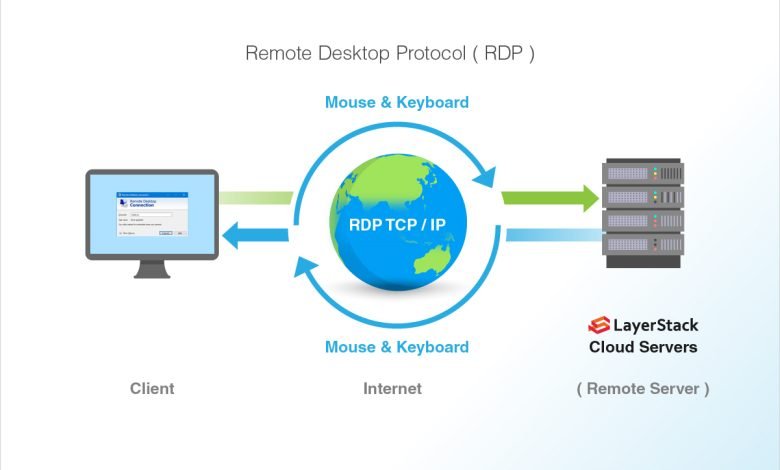Are Remote Desktops Right for Small Businesses?

The short answer is yes, they are.
Remote Desktop Solutions (RDS) consists of cloud-based remote desktops delivered to individuals and businesses by third-party providers. Because the desktops in question are virtual, they are a service rather than a product. RDS providers offer end-to-end managed services to cover everything from design and deployment to monitoring and maintenance. With the emergence of the post-pandemic hybrid workspace, many small businesses have adopted Remote Desktop Services as a necessity. Even so, misplaced notions around the essential features of RDS – such as security, benefits, and cost – continue to abound. Businesses that have adopted remote desktops merely to stay alive in the post-pandemic environment now realize the game-changing potential of Remote Desktop Services. To their surprise, what started as a survival strategy is the reason they are now ahead of their competitors(remote desktop services).
So, what are Remote Desktops?
Remote Desktop Services provides businesses with cloud-hosted remote desktops developed using the VDI (Virtual Desktop Infrastructure) technology. The remote desktops are available on end-user devices and come fitted with applications that do not need to be purchased separately. The cloud stores all the applications users can access with a working internet connection.
How Remote Desktops Work (and why)
Remote Desktop Services makes small businesses agile and flexible by ensuring access and the capability to work uninterruptedly. For a distributed workforce working in a remote or hybrid mode, the ability to deploy a dedicated workspace from any location is vital. When businesses adopt remote desktops, employees can work from any location using a personal device connected to the internet. All they have to do is sign in using a set of unique credentials for data and applications to become available instantly.
RDS is also a way for businesses to minimize capital expenditure. Because RDS is managed entirely by the RDS provider, the need for an in-house IT team is gone. And with that, operational expenses come down significantly.
But cost-deduction is hardly effective without higher levels of efficiency. The reality is Remote Desktops work because they help a workforce maximize their potential by eliminating the need to manage IT. As IT challenges are outsourced to the RDS provider, small businesses can deliver more efficiently by focusing instead on business-critical processes.
The Many Benefits of Remote Desktop Services
Even without a digital workspace, the benefits of remote desktops are clear. They reinforce multi-level cost advantages with the qualities of agility and flexibility in the modern workspace that would have otherwise grown stagnant and unproductive. Remote desktops exist not only to keep things exciting but also because they have become business critical. Small businesses can now eliminate the need for in-house IT infrastructure because remote desktops come in the form of an end-to-end managed service that a third-party cloud RDS provider would be responsible for. In place of their own expensive IT teams, small businesses can now enjoy world-class IT services for their virtual desktops that do not burn a hole in their pockets.
The top four benefits of Remote Desktop Services are listed below:
Industry-standard Security: Remote desktops are protected within a multi-layered secure infrastructure that deploys such security safeguards as access controls, end-to-end encryption, antivirus software, firewalls, Intrusion Detection and Prevention systems (IDPs), intelligent policies, etc. These measures ensure the complete safety of both end-user devices and the network.
Centralized Control: For all businesses, complete control of data is crucial. State-of-the-art security measures are needed to prevent unauthorized access and data loss. Companies pay heavily to implement enterprise-grade security
measures that ensure maximum protection against data theft. This is particularly difficult to accomplish for small businesses on a lean budget.
Virtual Desktop Solutions come pre-installed with bank-level security measures to establish 360-degree data protection and control. Incorporating both
physical and digital security best practices, many trusted VDI providers treat data security as their topmost concern.
Virtualized Infrastructure: RDS can be incredibly cost-effective. With remote desktop services from third-party providers, small businesses need only pay for services they end up using as part of the
pay-as-you-use pricing plans. Physical infrastructure warrants in-house
IT management and its associated costs. But an RDS provider is responsible for maintaining virtual desktops. Thus, Remote Desktops is the perfect tool
for small businesses looking to make the most out of a tight budget and limited expenses.
Zero Compatibility Issues: Compatibility is never an issue with Remote Desktop Services.
Each user is provided with a dedicated Virtual Machine (VM) running
any OS they prefer. Thus, although Remote Desktops are accessible
from end-user devices, they run independently of the device OS. Remote Desktops are platform-independent.
The Bottomline
While the pandemic has changed many things, the workspace has transformed to an extent nothing else has because the very first victim of the pandemic was the ability to work.
Employees found it challenging to continue working and delivering with travel restrictions and office closures in full effect.
Small businesses were the first to realize that the way we worked had to change if we were to keep working in a world that had changed irrevocably.
Out of this necessity to keep going, virtual desktop solutions emerged as the best possible decision these businesses made toward growth and sustainability.
Today Remote Desktop Services is not just a big hit. Remote Desktops have become a business-critical tool that everyone needed but did not know they did until now.
Although remote desktops have been around since the early 2000s, their use has only made a strong resurgence.
In today’s post-pandemic world of a distributed workforce, the popularity of RDS will likely go from strength to strength.




![Photo of [streams@]: Lancaster vs Guyer Live free HS Football Score & REsults](https://blogspinners.com/wp-content/uploads/2022/09/080222-HEAT-HS-FOOTBALL-PRACTICE-QT-9P-PKG_00.00.12.16-390x220.webp)
